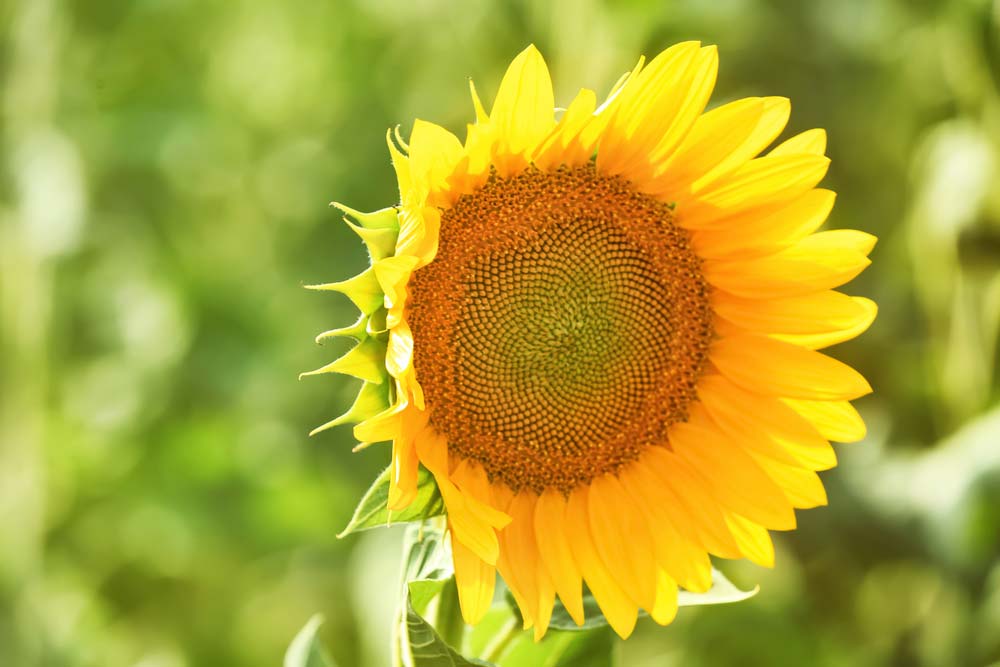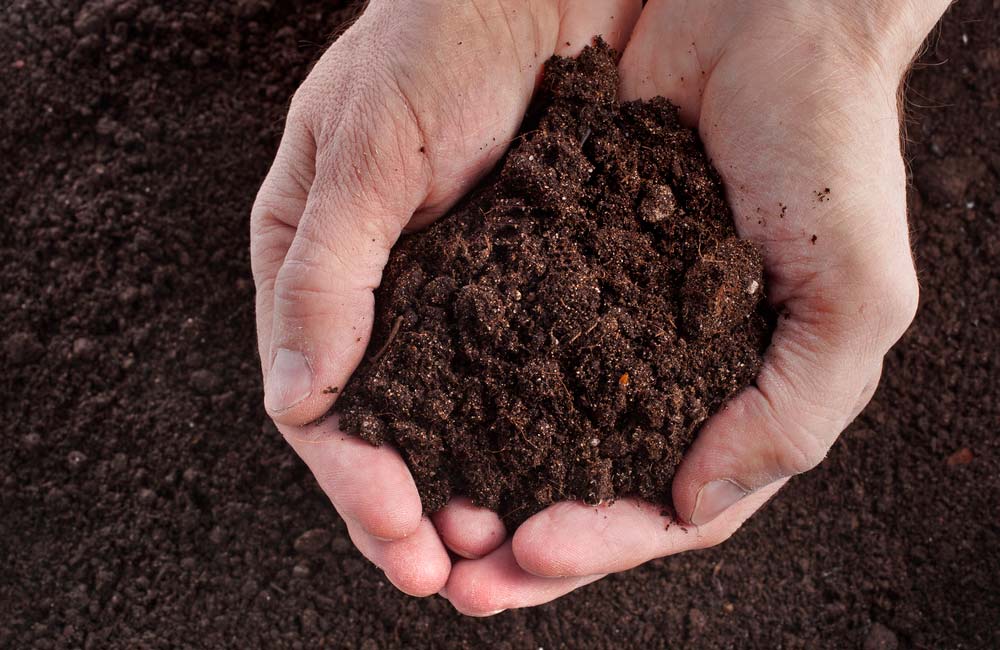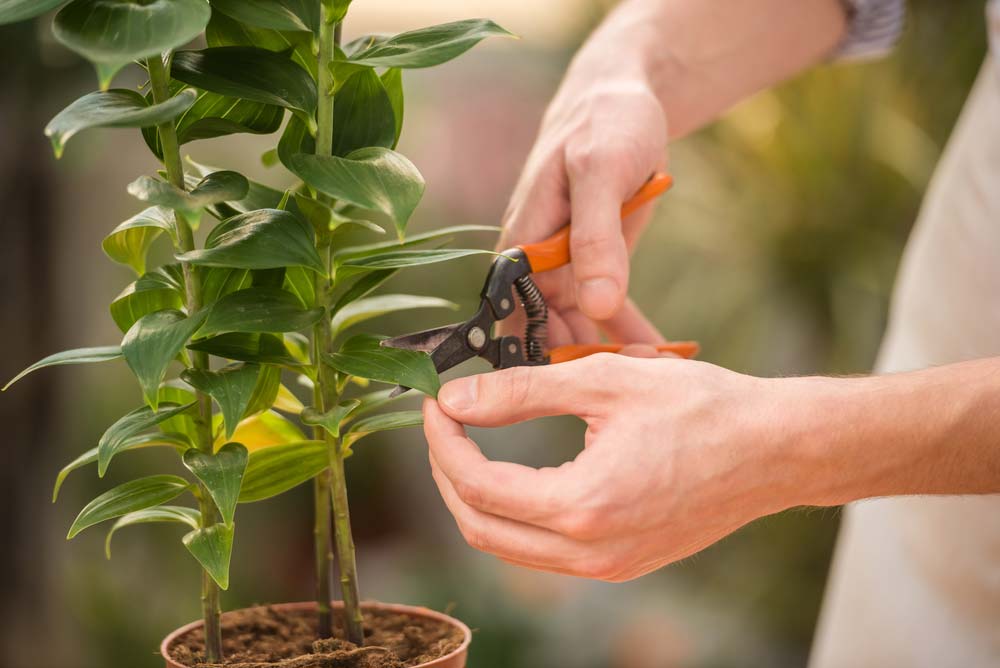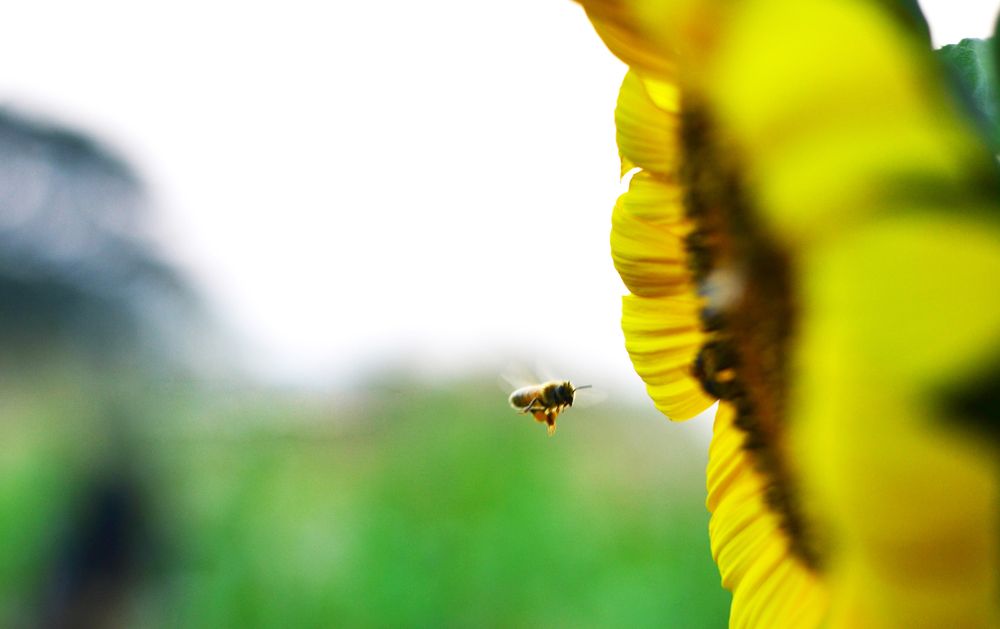The sunflower is a very beautiful flower that can be grown both indoors (in a pot) and outside (in the garden).
However, like the cultivation of other plants, the sunflower also requires specific care to always stay healthy.
In most cases, it is not necessary to prune the sunflowers frequently, unless you are growing several in the same space and it can then serve to prevent the flowers from stealing each other's space.
Thinking about planting sunflowers and have doubts about how you can take care of these flowers? Find out in this article what to do to care for a sunflower:
Main characteristics of sunflowers

Among the most common characteristics of sunflowers are:
- Plants that reach 1m to 4m in height;
- They represent fame, success, happiness and even luck;
- Sunflower oil is made from its seeds;
- It is a flower that likes higher temperatures;
- You need to receive direct sunlight for at least a few hours a day;
- Likes wetter soil;
- It can be planted in pots, but it is recommended to bet on smaller species;
- They are used for the production of biodiesel;
- Its flowers are large and striking;
- They attract insects that contribute to garden pollination, such as bees;
Where is the best place to plant a sunflower?

You have two options when planting sunflowers, the pots and the garden itself, however each requires different care:
1. In the vase
If the idea is to grow the sunflower indoors or in an apartment, the pot is the best option. In this case, it is necessary to choose a large pot and invest in dwarf or smaller plants.
Sunflowers do not handle the change of location well, so plant directly in the pot where you want the flowers to stay.
It is also important that you leave the vase in a location that receives direct sunlight, as the flowers need it to grow.
2 In the garden
In the garden it is already possible to invest in sunflower species that reach higher heights. Besides that you can plant more than one. Always taking care that they are not too close to each other.
Prepare the soil (this flower likes a neutral pH, although it is quite tolerant to variations) and dig a hole two to four centimeters deep. Plant the seeds and water.
When sunflowers are born, it will be necessary to prune them if they are very close to each other. You should also keep the soil moist, but never soaked.
Planting and flowering season

Sunflowers can be planted throughout the year, there are no restrictions on the time of planting. However, if you choose the warmer periods, such as spring and summer, you will see the flowering period arrive more quickly.
The flowers usually appear between spring and summer, yet, depending on the time they were planted and the temperature, they can appear at other times of the year. The main thing is that the temperature varies between eighteen and thirty degrees, considered ideal for flowering.
Sun exposure and ideal temperature
As you may have heard, sunflowers follow the movement of the sun. Which means that they like to be exposed to sunlight.
If they are being grown in the garden they will certainly be exposed to the sun, now if you are taking care of the flowers inside the house or apartment, make sure they receive direct sunlight at least six hours a day.
As for the temperature, these flowers prefer the warmer climates, so much so that they are able to withstand heat very close to 40 degrees. So the ideal is to take care that they are not exposed to the cold, especially if you live in colder regions.
Sunflowers do not survive temperatures below five degrees and it is recommended that they be exposed to a minimum of ten degrees and not less to ensure that they grow healthy.
How Irrigation Works

These flowers don't like very dry or extremely soggy soil. Therefore, it is interesting to observe how the land is doing and water it to keep it moist.
Adult plants can cope with periods of drought, but over-watering will kill sunflowers. If the flower is in the garden and it has been raining frequently, watering may not be necessary.
Now if you stay indoors, in a pot, check how the earth is daily. If it is humid, avoid watering, if it is starting to get dry, it is necessary to water the plant.
Ideal soil

Sunflowers are not very prejudiced about the soil. They can even survive variations in pH (more acidic or more basic). Still, the ideal is to plant them in soil of neutral pH and with various nutrients.
Fertilizing the soil is not even recommended, unless the idea is to obtain very tall flowers. In this case, the recommended fertilizers are those based on nitrogen.
Another important aspect in relation to the soil is the humidity. It must be a space that absorbs water without accumulating and that also does not dry out so easily.
The soil must also be soft, loose and light, to facilitate planting.
Pruning of sunflowers

Most of the time there is no need to prune the sunflowers, unless your goal is to harvest them. This is because they are plants that bloom only once a year.
Pruning is recommended only for those who have many flowers planted together and who are growing in groups. In this case, pruning is ideal to prevent one sunflower from knocking over the other.
If you need to prune, it is recommended to do this only twice a year, usually in late spring or early summer.
Another interesting tip in relation to pruning, also recommended for those who are growing several flowers is to remove those that have become smaller and weaker. This should be done when the plant reaches approximately 8 cm in height.
So you increase the space between the sunflowers and ensure that only those that will be strong and beautiful remain planted. This space created by removing the weakest plants also helps to prevent one sunflower from knocking over the other.
Pest protection

To protect your sunflowers from attack by pests it is interesting that:
1. Remove pests
Sunflowers planted in the garden are more exposed to this situation. The plant is quite resistant to pests, but it is usually the victim of a moth, which lays its eggs in the middle of the flower.
If this happens it will be necessary to remove the eggs one by one.
2. Apply fungicide
Another common situation is the appearance of mold and rust, caused by fungi. To prevent it, just apply a little fungicide.
3. Place screens over the sunflowers
Birds also like these plants very much, they even feed on them. If you want to prevent this from happening you can protect the flowers by placing screens on them.
Still, this is only recommended if you notice the appearance of many birds attacking the flowers. Otherwise, there is no need to use the screen.
Now you know how to grow and care for sunflowers. As you can see, they are plants that do not require great care and survive well in different environments.
The main thing is to ensure that they are exposed to the sun and take care of watering, as the plant does not like very wet soil.



